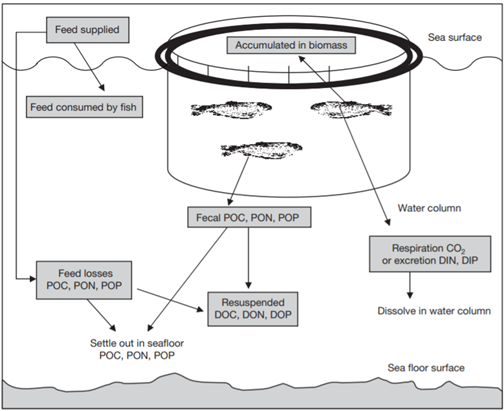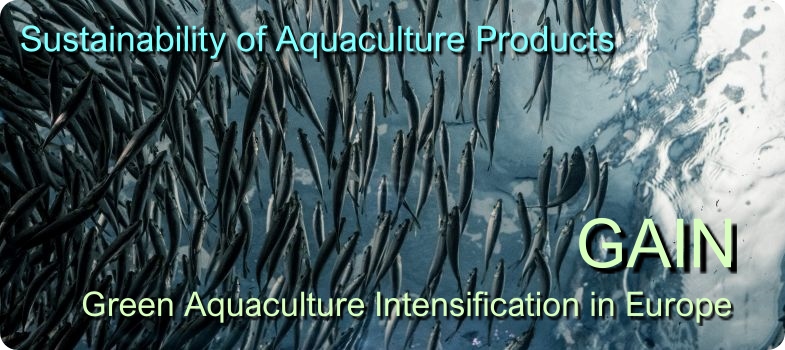Local impacts
So far this course has focused on global supply chain impacts, but there are also localised impacts to consider such as the effect on eutrophication at the farm level. The number of nutrients that are emitted from a farm system depends on the digestibility and efficiency of feed delivery. Poorly formulated diets may lead to poorer digestibility and therefore more dissolved and solid effluent. Poor feed delivery could also lead to poorer digestibility and more food wastage. Dissolved nutrient release leads to more eutrophication, while solid wastes can build up underneath cage farms affecting the composition of the benthic communities, or leading to more sludge in freshwater systems that requires disposal. The build-up of organic matter can also lead to anaerobic processes that release methane, a powerful GHG gas. The pathways that lead to eutrophication and benthic impact at marine cage farms are summarised in Figure 5 (Wang et al., 2012).

Figure 5: Pathways leading to eutrophication and benthic impact at marine cage farms (Wang et al, 2012)
Other local
impacts are more difficult to quantify. These include interactions with wild
populations of the same and other species. Interactions may be through escapes
that may lead to competition with local populations and possible predation that
can lead to changes in ecosystem structure where non-indigenous species are
introduced. Examples of which are Nile tilapia (Oreochromis niloticus)
and common carp (Cyprinus carpio) into Asian and North American
watercourses respectively. Escaped farm fish can also interact with local populations
of the same species, resulting in “genetic pollution” that may make the local
strains less resilient. Even when there are no escapees, farmed fish may act as
a disease vector to local populations and can also be infected by wild
populations. A high-profile example of this is the transfer of sea lice from
salmon farms to wild populations, especially more sensitive smolts that are
travelling through lochs and fjords on their way to the sea. Declines in local,
wild populations have often started before the siting of salmon farms in the
same location so are difficult to link. Nevertheless, the proliferation of sea lice is a major concern from a farm welfare perspective as well as the
potential impacts on wild populations and is a priority area for research.
